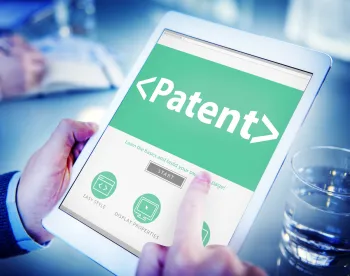The Summary
Modern U.S. Patent Law provides a patentee with a right to exclude others from practicing an invention for twenty years from the earliest priority date. Is it possible that a company could today infringe a U.S. patent with a priority date from 1987? The surprising answer is “yes.” This was the scenario in Personalized Media Communications, LLC (“PMC”) v. Apple, Inc. (“Apple”), a recent case decided by the Court of Appeals for the Federal Circuit (“Federal Circuit”).
The jury in the lower court had unanimously found that Apple infringed U.S. Patent No. 8,191,091 (“‘091 Patent”) and awarded PMC over $308 million in reasonable-royalty damages. Much to PMC’s dismay, the lower court held that Apple had successfully raised the affirmative defense of prosecution laches and the patent was unenforceable against Apple because PMC had employed an inequitable scheme to extend its patent rights that had prejudiced Apple. PMC appealed to the Federal Circuit.
However, the Federal Circuit affirmed that prosecution strategy such as PMC’s, which is shown to be unreasonable and rooted in a strategy to deliberately delay in order to extend patent term length, can result in a patent being unenforceable when the unreasonable strategy has prejudiced the defendant.
The Story
In the summer of 1995, the U.S. harmonized its patent terms with those used elsewhere in the world and changed the U.S. patent term to run 20 years from the earliest priority date, rather than the prior framework of 17 years from issuance. Before the new patent law took effect, certain entities sought to take advantage of the patent term provided by the earlier law and filed applications that claimed priority to applications filed under the earlier patent law framework. PMC was one of those entities.
In the months leading up to the law change, PMC filed 328 patent applications. Each application claimed priority to one or more applications filed in the 1980s, which due to their length (e.g., 500 pages of text) and complexity were still pending in the U.S. Patent & Trademark Office (USPTO). Each application was filed with a single claim and then subsequently amended over time. According to the lower court, this greatly increased the family of related patent claims to the “range of 6,000 to 20,000 claims.” In addition, PMC submitted an unusually vast amount of prior art disclosures, thirty pages, for evaluation by the USPTO, which, according to the lower court, included references having little-to-no relevance. This prosecution strategy appeared to be aligned with internal PMC documents cited by the court describing PMC’s strategy “to prosecute coverage on its technologies deliberately over time in such a way that broad coverage is in effect at any given time while the duration of coverage is prolonged as long as possible” in hope of “exercise[ing] far-reaching market control for as long as 30 to 50 years.”
Because of the voluminous filings, PMC and an overburdened USPTO eventually agreed to a prosecution plan at the USPTO that, in essence, allowed PMC two bites at the apple. Without getting further into the particulars, PMC was allowed to reintroduce rejected claims from one application into another unexamined application for further consideration at a later date.
This is what happened with the claim at issue in the ‘091 Patent asserted against Apple. The claim had been rejected in 2003 in an earlier application but was reintroduced into another application in 2011 while PMC was in negotiations with Apple. PMC did not mention the (reintroduced) claim to Apple during negotiations but, instead, waited until the patent was granted to assert that claim against Apple on a product developed by Apple in the early 2000s and launched with the Apple Music store in 2003. This lying-in-wait tactic was aligned with an internal document of PMC’s dating from the 1990s which, according to the lower court, described a PMC strategy of “hiding its technologies, ‘quietly monitor[ing]’ infringement, and ‘roll[ing] out’ patents over time because ‘[o]nce infringement becomes widespread in an industry, the patented technology becomes so deeply embedded in commercial products that design around is not an option to infringers.’”
Clearly persuaded by PMC’s internal documents and course of actions, the Federal Circuit found that the lower court had not abused its discretion and that Apple had successfully raised the affirmative defense of prosecution laches. Prosecution laches require proving two elements: (1) the patentee’s delay in prosecution must be unreasonable and inexcusable under the totality of circumstances and (2) the accused infringer must have suffered prejudice attributable to the delay. In this case, the Federal Circuit affirmed the lower court’s finding that (a) under the totality of the circumstances PMC’s prosecution strategy was unreasonable and rooted in a strategy to deliberately delay in order to extend the length of its patent term (the ‘091 patent was set to expire 40 years after its 1987 priority date) and (b) Apple was prejudiced due to the delay. As a result, the Federal Circuit upheld the lower court’s ruling that the ‘091 Patent is unenforceable against Apple based on prosecution laches.
By keeping abreast of the latest law updates, the IP professionals at von Briesen provide effective advice for our clients. We welcome the opportunity to apply our experience to help you navigate the IP landscape.




 />i
/>i

